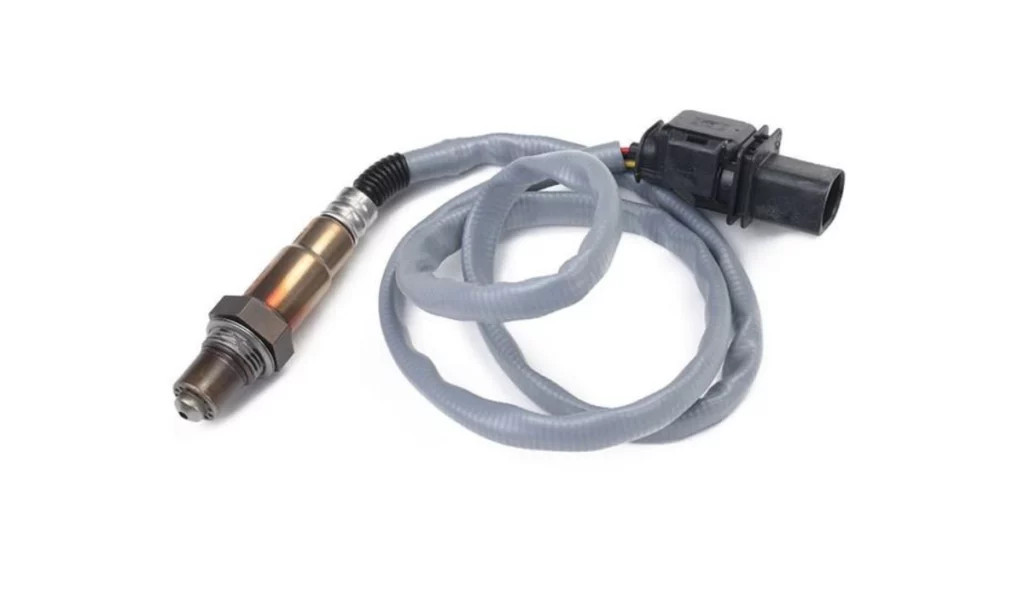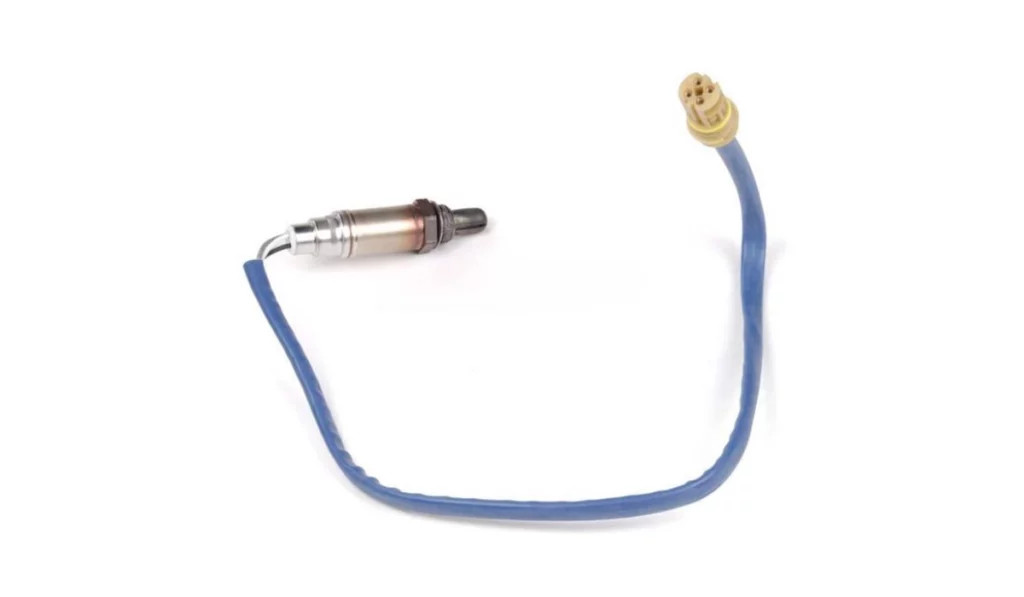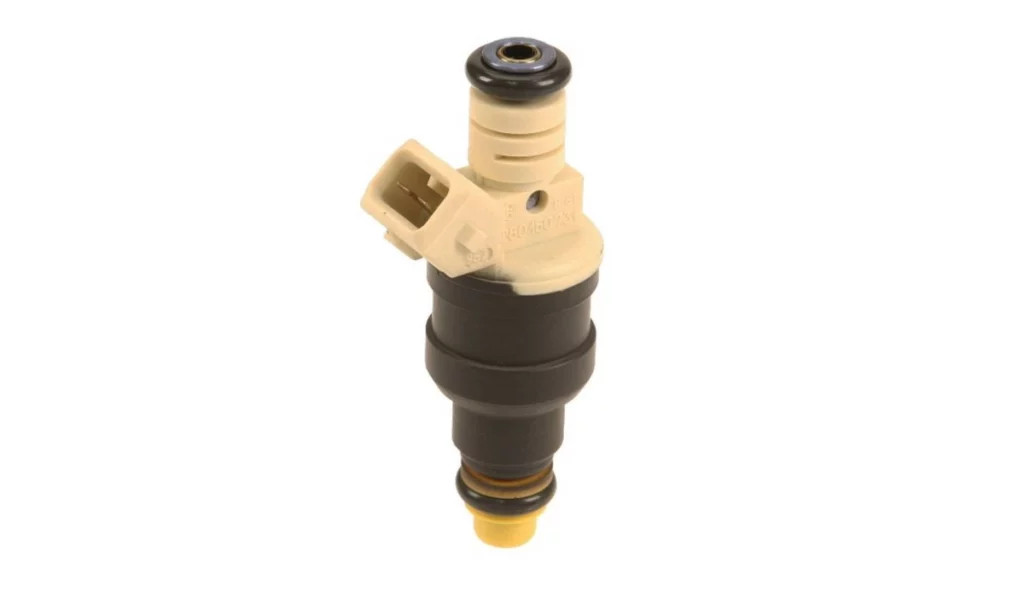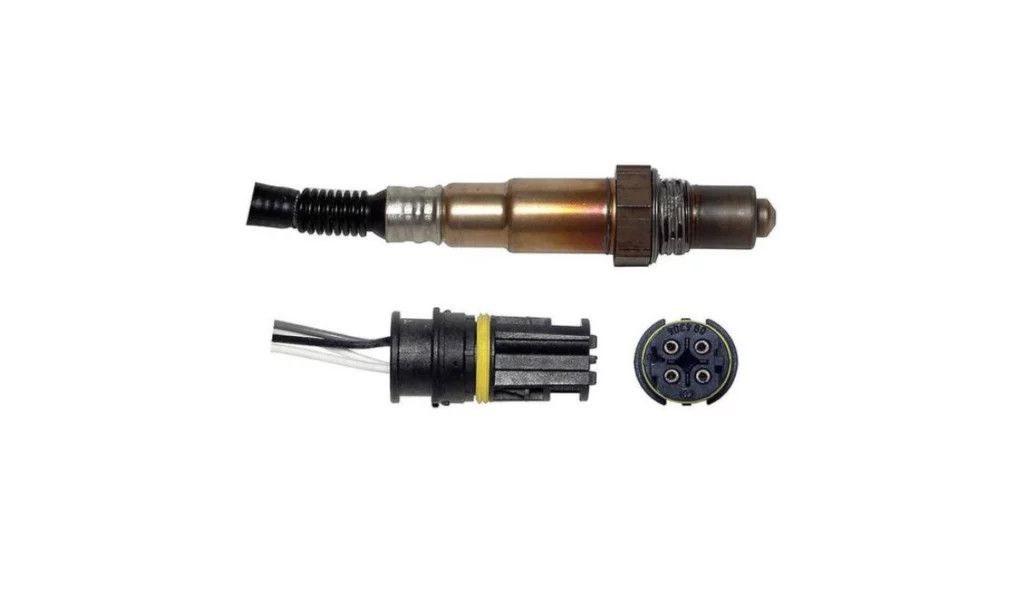Code P0150: Oxygen Sensor Circuit Malfunction (Bank 2, Sensor 1) – How to Fix
The P0150 code indicates a malfunction in the oxygen sensor circuit for Bank 2, Sensor 1. Discover the causes, symptoms, diagnostic steps, and repair solutions for the P0150 code and learn how VCCarTool can assist you in resolving this issue, ensuring optimal engine performance and reduced emissions.
If you are uncertain about how to repair, diagnose, or program the code P0150, contact VCCarTool via WhatsApp: +1 (901) 414 – 1927 for assistance to avoid causing more severe errors.
1. What is an Oxygen Sensor?
Oxygen (O2) sensors are essential parts of your vehicle’s engine management system. These sensors monitor the amount of oxygen in the exhaust gases and provide feedback to the Powertrain Control Module (PCM) to adjust the air-fuel mixture. There are two main types of oxygen sensors:
1.1 Upstream O2 Sensor
- Located before the catalytic converter.
- Directly monitors the air-fuel mixture coming from the engine.
- Helps the PCM determine the correct amount of fuel to inject based on the oxygen content in the exhaust gases.
1.2 Downstream O2 Sensor
- Located after the catalytic converter, typically underneath the vehicle.
- Monitors the efficiency of the catalytic converter.
- Helps the PCM detect any issues with the catalytic converter or the overall exhaust system.
The terms “upstream” and “downstream” refer to the direction of exhaust flow, not the physical location of the sensor on the engine.
According to research from the Massachusetts Institute of Technology (MIT), Department of Mechanical Engineering, in July 2025, a properly functioning oxygen sensor is crucial for:
- Fuel Efficiency: Optimizing fuel consumption by maintaining the ideal air-fuel ratio.
- Emissions Control: Reducing harmful emissions and ensuring efficient combustion.
- Engine Performance: Enhancing engine power and responsiveness through accurate air-fuel mixture regulation.
 bmw oxygen sensor o2 sensor 11787523435 genuine bmw
bmw oxygen sensor o2 sensor 11787523435 genuine bmw
2. What is the P0150 Code?
The P0150 code is an On-Board Diagnostic (OBD-II) trouble code indicating a problem with the engine’s O2 sensor in Bank 2, specifically Sensor 1. Bank 2 refers to the side of the engine that does not contain cylinder number one. Sensor 1 is the upstream O2 sensor before the catalytic converter, monitoring exhaust gases before they enter the converter.
2.1 How the P0150 Code is Triggered
The O2 sensor generates a voltage signal based on the difference in oxygen levels in the exhaust gases. The PCM uses this signal to adjust the fuel delivery system. When the PCM detects a signal voltage higher or lower than expected from this sensor for an extended period, it triggers the P0150 code.
3. Symptoms of Code P0150
When the P0150 code is triggered, it can lead to various symptoms that indicate a decline in vehicle performance and overall driving experience:
3.1 Check Engine Light
The most noticeable symptom is the illumination of the check engine light (CEL) or malfunction indicator lamp (MIL) on the dashboard. This light signals a problem requiring attention. An OBD-II scanner confirms the Diagnostic Trouble Codes (DTCs) stored in the Powertrain Control Module (PCM).
If you encounter a check engine light and need assistance, contact VCCarTool via WhatsApp: +1 (901) 414 – 1927 for a quick diagnostic check.
 mercedes benz oxygen sensor o2 sensor 0015401017 genuine mercedes benz
mercedes benz oxygen sensor o2 sensor 0015401017 genuine mercedes benz
3.2 Reduced Fuel Efficiency
With the P0150 code, engine performance can be compromised, leading to the need to press the gas pedal harder for acceleration. This increased demand for fuel, without proper air supply, results in incomplete combustion, wasting fuel and reducing fuel efficiency.
3.3 Rough Idling
A malfunctioning O2 sensor can disrupt the air-fuel mixture in the engine, causing it to idle roughly or unevenly. The PCM relies on precise readings from the O2 sensor for smooth operation, and a faulty sensor hinders its ability to achieve optimal idling conditions.
3.4 Reduced Engine Performance
The P0150 code indicates a problem with an oxygen sensor, disrupting the balance of fuel and air, and causing the engine to perform poorly. You may notice your car struggling to accelerate, experiencing a loss of power, or feeling like it’s not running smoothly.
3.5 Increased Emissions
When the O2 sensor in Bank 2 is not functioning correctly, the engine can run with an improper air-fuel mixture, leading to incomplete fuel combustion. This results in increased exhaust emissions, which can cause your vehicle to fail an emissions test.
3.6 Is It Safe to Drive with a P0150 Code?
Driving with a P0150 code is generally safe for short periods, but not recommended for extended periods. Address the issue quickly to prevent decreased fuel efficiency and increased emissions. Regular maintenance ensures optimal performance and prevents further damage.
4. What Causes the P0150 Code?
Several factors can trigger the P0150 code, interfering with the oxygen sensor’s ability to function properly:
4.1 Faulty O2 Sensor
The most common cause is a faulty oxygen sensor. Over time, oxygen sensors can become damaged and lose their ability to function correctly. A bad O2 sensor may provide incorrect information about the air-fuel mixture to the PCM, leading to either a lean (too much air) or rich (too much fuel) mixture.
4.2 Wiring and Connector Problems
Damaged, frayed, or disconnected wiring and connectors linking the O2 sensor to the PCM can disrupt communication between the sensor and the PCM. The PCM may receive incorrect or incomplete data, leading to poor engine performance or increased fuel consumption.
 porsche fuel injector 91160612001 genuine porsche
porsche fuel injector 91160612001 genuine porsche
4.3 Imbalanced Air-Fuel Mixture
An imbalance in the air-fuel mixture can also trigger the P0150 code. This can be due to issues in the fuel system, such as the fuel injector and fuel regulator, or the air intake system, such as the air filter and intake manifold. An imbalanced mixture affects the composition of exhaust gases, triggering the P0150 code.
4.4 Exhaust System Leaks
Leaks in the exhaust system before the oxygen sensor can cause the P0150 code. These leaks allow excessive air to enter the exhaust system, affecting the O2 sensor’s measurements and causing the PCM to detect inaccurate readings.
4.5 PCM Failure
Although rare, PCM failure can cause the P0150 code. The PCM interprets sensor data, including signals from the O2 sensor. If the PCM fails, it may misinterpret sensor readings, leading to the persistent triggering of the P0150 code.
If you suspect a PCM issue, VCCarTool offers advanced diagnostic services. Contact us via WhatsApp: +1 (901) 414 – 1927 for expert assistance.
5. Diagnostic Procedure for P0150
To effectively address the P0150 code, follow this diagnostic procedure to identify the root cause of the problem:
5.1 Check for Other DTCs
Use an OBD-II scanner to identify any other DTCs stored in your car’s PCM. These codes can provide additional insights into the problem.
5.2 Inspect O2 Sensor Wiring and Connectors
Check the O2 sensor wiring harness and connectors for any signs of damage, corrosion, or loose connections. Ensure the sensor is securely attached to the exhaust manifold. Perform a continuity test on the O2 sensor’s wiring and check if the wiring is shorted to positive or negative.
5.3 Check for Exhaust Leaks
Examine the exhaust system for leaks near the oxygen sensor. Look for cracks or holes in the exhaust pipes and manifold. Repair any leaks to ensure accurate sensor data and proper engine performance.
5.4 Test O2 Sensor Voltage
Use a multimeter to measure the sensor’s voltage while the engine runs. The voltage should fluctuate between 0.1V and 0.9V. A steady voltage or lack of fluctuation indicates a faulty sensor.
5.5 Check O2 Sensor Readings
Use an OBD-II scanner to observe the sensor’s oxygen level readings when the engine runs. Consistent or abnormal readings may suggest a faulty sensor or other issues affecting engine performance and emissions control.
5.6 Examine the Air Filter and Intake System
Inspect the air filter and intake system. A clogged air filter restricts airflow, leading to a richer air-fuel mixture. Leaks in the intake system can cause a leaner air-fuel mixture.
 mercedes benz oxygen sensor o2 sensor 0025400817 denso 2344893
mercedes benz oxygen sensor o2 sensor 0025400817 denso 2344893
6. DIY O2 Sensor Replacement: A Step-by-Step Guide
After diagnosing the P0150 code and determining that the O2 sensor is faulty, the next step is to replace the sensor. This task requires careful attention to detail:
6.1 Safety Precautions
- Work in a well-ventilated area.
- Allow the engine to cool down.
- Disconnect the battery.
- Be aware of potential fire hazards near the exhaust system components.
- Wear appropriate personal protective equipment (PPE), such as work gloves and goggles.
6.2 Tools and Equipment Required
- Hydraulic jack
- Jack stands
- Safety goggles
- Gloves
- Wire brush
- Screwdriver set
- Socket wrench set
- Spanner set
- Oxygen sensor wrench
- Torque wrench
6.3 Step-by-Step Instructions
- Locate the Oxygen Sensor in Bank 2: Identify the exact location of the sensor for your vehicle model.
- Disconnect the Electrical Connector: Disconnect the electrical connector attached to the oxygen sensor.
- Remove the Oxygen Sensor: Use the appropriate wrench or socket to remove the O2 sensor from the exhaust pipe.
- Clean the Mounting Area: Use a wire brush to clean the threads on the exhaust pipe.
- Apply Anti-Seize Lubricant: Apply a small amount of anti-seize lubricant to the threads of the new oxygen sensor.
- Install the New Oxygen Sensor: Thread the new oxygen sensor into the exhaust pipe opening and tighten to the specified torque value.
- Reconnect the Electrical Connector: Reconnect the electrical connector.
- Clear Trouble Codes: Use an OBD-II scan tool to clear any stored trouble codes.
- Verify Proper Operation: Start the engine and check if the check engine light remains off.
6.4 Can I Use Aftermarket Oxygen Sensors?
Yes, you can use aftermarket oxygen sensors as replacements. Ensure compatibility, choose a reputable brand, follow proper installation instructions, and be prepared for any necessary calibration.
If you need assistance in selecting the right O2 sensor or with the installation process, VCCarTool is here to help. Contact us via WhatsApp: +1 (901) 414 – 1927 for expert guidance.
7. Addressing Other Potential Issues
7.1 Resolve Wiring Problems
Address any damaged wires, connectors, or harnesses to maintain proper electrical connectivity.
7.2 Address Exhaust Leaks
Repair any exhaust leaks to prevent false readings and premature sensor failure.
 land rover engine air filter LR011593 mann filter C35126
land rover engine air filter LR011593 mann filter C35126
7.3 Replace the PCM
If tests indicate a problem with the PCM, try reprogramming it. If the P0150 code persists, replace the PCM.
8. Maintenance Tips to Prevent the P0150 Code
After resolving the P0150 code, follow these maintenance tips to prevent future issues:
8.1 Follow Manufacturer Recommendations
Adhere to the manufacturer’s recommendations for replacing spark plugs, air filters, and fuel filters to maintain the efficiency of your vehicle’s combustion process.
8.2 Oxygen Sensor Inspection
Regularly inspect oxygen sensors for cracks, discoloration, and buildup. Replace sensors showing signs of deterioration.
8.3 Inspect the Exhaust System
Periodically check the exhaust system for leaks, damage, or loose connections.
8.4 Use High-Quality Fuel
Use high-quality fuel to reduce the buildup of contaminants and deposits in the fuel system and engine.
8.5 Address Check Engine Light Issues Promptly
If the check engine light illuminates, have the issue diagnosed and addressed as early as possible.
For comprehensive vehicle maintenance and diagnostic solutions, trust VCCarTool. Contact us via WhatsApp: +1 (901) 414 – 1927, Email: [email protected], or visit our Website: vccartool.com.
9. VCCarTool: Your Partner in Automotive Diagnostics and Solutions
Experiencing the P0150 code can be frustrating, but with the right knowledge and tools, you can resolve the issue efficiently. VCCarTool offers expert diagnostic services, high-quality automotive tools, and comprehensive support to help you keep your vehicle running smoothly.
- Expert Diagnostics: Our team provides accurate and reliable diagnostic services to pinpoint the exact cause of your vehicle’s issues.
- Quality Tools and Equipment: We offer a wide range of OBD-II scanners, multimeters, and other tools to assist you in diagnosing and repairing your vehicle.
- Comprehensive Support: From step-by-step guides to expert advice, VCCarTool is committed to providing the support you need.
Don’t let the P0150 code or any other automotive issue keep you off the road. Contact VCCarTool today and let us help you get back on track. Our services not only save you time and money but also enhance the performance and longevity of your vehicle.
For immediate assistance and expert advice, contact VCCarTool via WhatsApp: +1 (901) 414 – 1927. We’re here to help you with all your automotive diagnostic and repair needs.
10. Why Choose VCCarTool?
Choosing VCCarTool means opting for expertise, efficiency, and reliability. We understand the challenges faced by auto repair professionals and DIY enthusiasts alike. Our services are designed to provide:
- Time Savings: Quick and accurate diagnostics to reduce repair time.
- Cost Efficiency: Affordable diagnostic and repair solutions.
- Enhanced Performance: Ensuring your vehicle runs smoothly and efficiently.
Let VCCarTool be your trusted partner in automotive diagnostics and repair. Contact us today and experience the difference.
11. Call to Action
Are you struggling with the P0150 code or any other automotive issue? Don’t wait! Contact VCCarTool now for expert assistance and high-quality diagnostic tools. Let us help you resolve your vehicle’s problems quickly and efficiently.
- Get Immediate Support: Contact us via WhatsApp: +1 (901) 414 – 1927 for a free consultation.
- Explore Our Services: Visit our Website: vccartool.com to learn more about our diagnostic and repair solutions.
- Email Us: For detailed inquiries, email us at [email protected].
Take the first step towards resolving your vehicle’s issues today. Contact VCCarTool and experience the best in automotive diagnostics and repair.
12. FAQ About Code P0150
12.1 What does the P0150 code mean?
The P0150 code indicates a malfunction in the oxygen sensor circuit for Bank 2, Sensor 1, meaning there is an issue with the sensor that monitors the exhaust gases on the side of the engine that does not contain cylinder number one.
12.2 Can a faulty oxygen sensor cause poor fuel economy?
Yes, a faulty oxygen sensor can disrupt the air-fuel mixture, leading to incomplete combustion and reduced fuel efficiency.
12.3 How do I check for exhaust leaks?
You can check for exhaust leaks by visually inspecting the exhaust system for cracks, holes, or loose connections. You can also use a smoke machine to identify leaks.
12.4 What tools are needed to replace an oxygen sensor?
You will need a hydraulic jack, jack stands, safety goggles, gloves, a wire brush, a screwdriver set, a socket wrench set, a spanner set, an oxygen sensor wrench, and a torque wrench.
12.5 Is it necessary to replace both upstream and downstream oxygen sensors at the same time?
It is not always necessary to replace both sensors at the same time, but it is recommended to inspect both sensors and replace them if they show signs of deterioration.
12.6 How often should oxygen sensors be replaced?
Oxygen sensors should be replaced every 60,000 to 100,000 miles, depending on the vehicle and driving conditions.
12.7 Can a bad PCM cause the P0150 code?
Yes, although rare, a malfunctioning PCM can misinterpret sensor readings and trigger the P0150 code.
12.8 What is Bank 2, Sensor 1?
Bank 2 refers to the side of the engine that does not contain cylinder number one, and Sensor 1 is the upstream oxygen sensor before the catalytic converter.
12.9 How do I clear the P0150 code after fixing the issue?
After fixing the issue, use an OBD-II scan tool to clear the stored trouble codes from the PCM.
12.10 Can I drive my car with the P0150 code?
Driving with a P0150 code is generally safe for short periods, but it is not recommended for extended periods. Address the issue quickly to prevent decreased fuel efficiency and increased emissions.
If you’re still unsure about how to resolve the P0150 code or need expert assistance, don’t hesitate to reach out to VCCarTool via WhatsApp: +1 (901) 414 – 1927 for personalized support and guidance.
